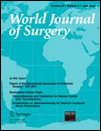Prospective Electromyographic Evaluation of Functional Postthyroidectomy Voice and Swallowing Symptoms
This article is based on work that was the subject of an oral presentation at the ISW 2011–IAES free paper session, August 28 through September 1, 2011, Pacifico Yokohama, Japan.
Abstract
Background
Voice and swallowing symptoms following thyroidectomy in the absence of any demonstration of laryngeal nerves injury are usually considered a functional outcome of uncomplicated operations, mainly related to scar formation and emotional reaction. They could be related to unapparent laryngeal nerve or cricothyroid (CT) muscle injuries detectable only by laryngeal electromyography (LEMG). We correlated such symptoms with LEMG patterns.
Methods
A total of 33 consenting patients undergoing total thyroidectomy (TT) were enrolled. Video-strobolaryngoscopy (VSL), acoustic voice analysis (AVA), and maximum phonation time (MPT) were performed preoperatively and 3 months postoperatively. Subjective evaluation of voice (Voice Impairment Score, or VIS) and swallowing (Swallowing Impairment Score, or SIS) were obtained preoperatively and 1 and 3 months postoperatively. At 1 month postoperatively LEMG was performed examining thyroarytenoid (TA) and CT muscles to evaluate the inferior laryngeal nerve (ILN) and the external branch of the superior laryngeal nerve (EBSLN), respectively.
Results
One patient experienced transient vocal cord palsy and was excluded. The remaining 32 patients completed the postoperative evaluation. No significant difference was found between preoperative and postoperative AVA and MPT parameters. Mean VIS was significantly worse than preoperatively 1 and 3 months after TT. No significant difference was found between preoperative and postoperative SIS. LEMG evaluation of TA muscle showed decreased voluntary activity and spontaneous fibrillation potentials in one patient. LEMG of the CT muscle did not reveal any sign of EBSLN injury.
Conclusions
Patients frequently complain of subjective symptoms early after TT. LEMG demonstrated the absence of subclinical laryngeal nerve injury in all but one patient, confirming their functional nature.
Conflict of interest
No competing interests are declared for this article.




